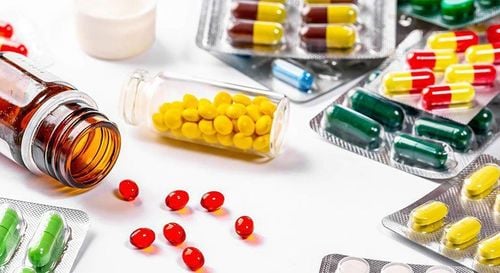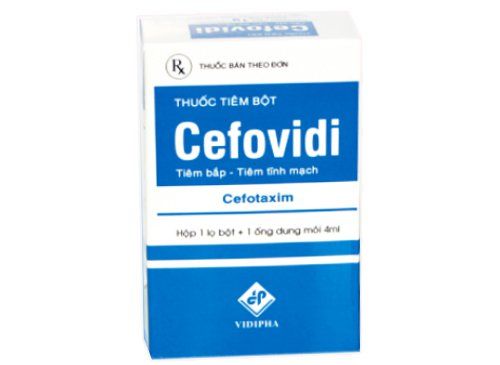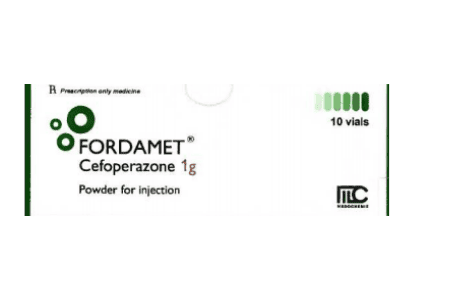This is an automatically translated article.
Tobrameson is effective in the treatment of symptoms of infections in the circulatory system, urinary system, sepsis and infections caused by susceptible bacteria. Readers can follow the article below to know what Tobrameson is?
1. What is Tobrameson?
Tobrameson is indicated for the treatment of inflammatory conditions of the eye such as: Inflammation of the conjunctiva and cornea. In addition, the drug is also used to treat infections in the circulatory system, urinary system, blood infections and infections caused by susceptible bacteria. Tobrameson is manufactured and registered by the Hanoi - VIETNAM CPC1 Pharmaceutical Joint Stock Company, with registration number: VD-30324-18.
Tobrameson drug is prepared in the form of eye drops, packed in boxes of 1 tube with the capacity of 2ml, 3ml, 5ml, 8ml, 10ml, each 1ml. The drug contains the main ingredients Tobramycin - in the form of Tobramycin Sulfate with a content of 3mg and Dexamethasone Phosphate - in the form of Dexamethasone sodium phosphate with a strength of 1mg.
2. When is Tobrameson indicated?
Tobramycin is indicated for use in the treatment of infections such as:
Urinary tract infections. Bacterial infections in the circulatory and digestive systems. Septicemia. Bone infection. Infections of the skin and soft tissues under the skin. Central nervous system infections. Infections caused by susceptible strains of bacteria. Treatment of infections caused by E. coli and Staphylococcus (2nd choice in treatment). Treatment of eye infections such as: keratitis, conjunctivitis, inflammation of the lacrimal sac, eyelid, trachoma and stye in the eye.
3. Usage and dosage of Tobrameson
3.1. Eye drops Tobramycin is prepared as an eye drop solution that should be used directly into the eye.
Dosage as follows:
Mild, moderate infections: Put 1 to 2 drops in the eye, 3 to 4 times a day. Severe infections: Instill 1 to 2 drops in the eye, use 1 time per hour and maintain until the condition is relieved, then gradually reduce the number of times of use. Do not use Tobramycin more than 15 days after first opening the bottle and to prevent infection, do not share 1 vial with many people.
3.2. Injections, infusions Tobramycin can be given by intramuscular (IM) and intravenous (IV) routes.
IM injection:
Adults: For patients with normal renal function, the dose of Tobramycin is 1mg/kg body weight, administered every 8 hours. Treat Tobramycin for 7 to 10 days. For patients with severe infections, the dose may be increased by 5 mg/kg body weight/day. However, this dose should be reduced to 3 mg/kg body weight/day as soon as possible. Children: 3 to 5 mg/kg body weight/day, divided into equal doses, every 8 to 12 hours. For neonates - weighing between 1.5 and 2.5 kg, administer at a dose of 2 mg/kg body weight every 12 hours. IV infusion:
When the new IM route cannot be used, the IV line should be used. Attention should be paid to the infusion phase: Tobramycin concentration does not exceed 1mg/ml (0.1%). Tobramycin infusion time is 1 to 2 hours. The dose for IV administration is similar to that for IM administration. Tobramycin should not be used in combination with other drugs to avoid unwanted interactions. For patients with renal impairment, the dose should be adjusted accordingly. Compatibility: Tobramycin is compatible with most current intravenous fluids. However, the drug is incompatible with Heparin solutions and can cause chemical interactions with B-lactams. Incompatibilities: Tobramycin is incompatible with Clyndamycin Phosphate Alcohol, Sargramostin and Carbenicillin. Therefore, do not mix with other drugs in the same syringe and same intravenous line. It is necessary to apply the correct dose of Tobrameson according to the instructions for use listed in the box or as directed by the doctor. Patients do not arbitrarily change the dose to be safe and achieve high efficiency.
4. What side effects does Tobrameson cause?
For patients with normal kidney function, when using Tobrameson at the right dose, side effects occur with a very low rate.
For the elderly, people with kidney failure when using Tobrameson overdose, there is a high risk of unwanted effects. Specifically, there may be side effects such as:
In the group of antibiotics Aminoglycosides, there are typical side effects that cause cochlear toxicity of the 8th nerve such as dizziness, decreased visual acuity, nystagmus, tinnitus. ears . Increased BUN and less urine output. Anemia, agranulocytosis, platelets and white blood cells decrease. Fever, rash, pruritus. Reduced orientation, headaches, forgetfulness, lethargy and nausea. Some other abnormalities may occur such as increased SGOT, SGPT and Lactic Dehydrogenase index, reducing serum Kal, Calcium, Magnesium and Sodium. Usually, these side effects go away when the patient stops taking Tobrameson. However, it is necessary to notify the doctor immediately if the patient experiences any unusual symptoms or condition while taking the drug for guidance and timely treatment.
5. What should be noted when using Tobrameson?
Should be noted and cautious when using Tobramycin for the following groups of people:
Tobrameson should be used with caution in the elderly and children under 15 years of age. Patients with liver failure/kidney failure and hepatic coma. The patient has weakness. The patient has a stomach ulcer. Hypersensitivity to any ingredient of Tobrameson. Pregnant women: It is important to consult a doctor when using the drug because tests still carry risks when used. Breastfeeding women: carefully weigh the benefits and risks for both mother and baby. You should consult your doctor before deciding to take the drug. Above is all information about Tobrameson drug, patients need to carefully read the instructions for use, consult a doctor / pharmacist before using. Absolutely do not arbitrarily buy Tobrameson home treatment because there may be unwanted side effects.
Please dial HOTLINE for more information or register for an appointment HERE. Download MyVinmec app to make appointments faster and to manage your bookings easily.













